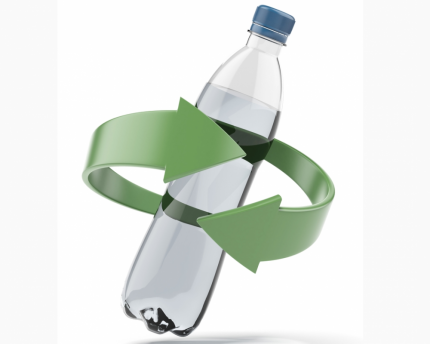
Organic materials can be used to make biodegradable plastic.
--Yu Hong Yap, Malaysia
Biodegradable plastic is defined as any form of plastic that can break down into its constituent components in the environment within days, weeks or months without leaving behind potentially toxic residue. The term bioplastic refers to any form of plastic derived from organic or plant-based materials rather than from petroleum, regardless of whether it can break down (biodegrade) easily in the environment. Thus, the two terms are not necessarily the same, although many people use the terms interchangeably.
The most common iteration of bioplastic, so-called PLA (polylactic acid) plastic, is typically derived from corn or sugarcane—and is biodegradable. Since we know how to grow those food crops so well, using the minimal amount of land for the highest yield, we can create bioplastic pretty efficiently. But given the still exploding global population numbers and more hungry mouths to feed, many wonder if it makes sense to take away land that could be used for growing food to make more plastic, even if it is biodegradable.
To avoid wasting food crops to make plastic, researchers have pioneered new formulations of biodegradable plastic derived from feedstock not suitable for food or feed, such as wood, wheat straw, bagasse (the dry pulpy residue left after the extraction of juice from sugar cane), corn cobs, palm fruit bunches, switch grass and waste vegetable oil.
In Europe, the Mars candy company is using potato waste in its biodegradable wrappers for Snickers bars. Likewise, there’s no reason why pineapple or peanut couldn’t work as a feedstock— although market conditions usually dictate that such products fetch a higher price as food. (They don’t have to be processed as they would if they become bioplastic.)
Another even more futuristic category of bioplastic feedstock uses algae or even carbon dioxide or methane waste to produce biodegradable plastic. These so-called third-generation feedstocks do double duty by creating biodegradable plastic and removing pollutants that would otherwise contribute to climate change or eutrophication -- an excessive buildup of nutrients in waterways that causes a dense growth of plant life and death of animal life from lack of oxygen.
While biodegradable plastic is hardly commonplace on store shelves, there are actions consumers can take to move things along. Encourage manufacturers to switch to biodegradable plastics and stop buying products made with conventional plastic. Sign the Earth Day Network’s petition to end plastic pollution.
While no one can reasonably argue against replacing conventional plastics with biodegradable ones, researchers from the University of Portsmouth in England and the U.S. Department of Energy's National Renewable Energy Laboratory accidentally developed an enzyme that breaks down conventional plastic into its constituent parts. This discovery could revolutionize recycling and be a godsend for marine and terrestrial ecosystems beset by plastic waste.
“We can all play a significant part in dealing with the plastic problem,” says the University of Portsmouth’s John McGeehan. “But the scientific community who ultimately created these wonder-materials must now use all the technology at their disposal to develop real solutions.”
Contacts:
Earth Day Network’s “Help End Plastic Pollution” Petition
Related:
Companies recycle plastic from oceans
This column was reprinted with permission. EarthTalk is produced by Roddy Scheer and Doug Moss and is a registered trademark of the nonprofit Earth Action Network. To donate, visit www.earthtalk.org. Send questions to: question@earthtalk.org.
Contact StudyHall.Rocks at this address, or like us on Facebook and tell us what you think.